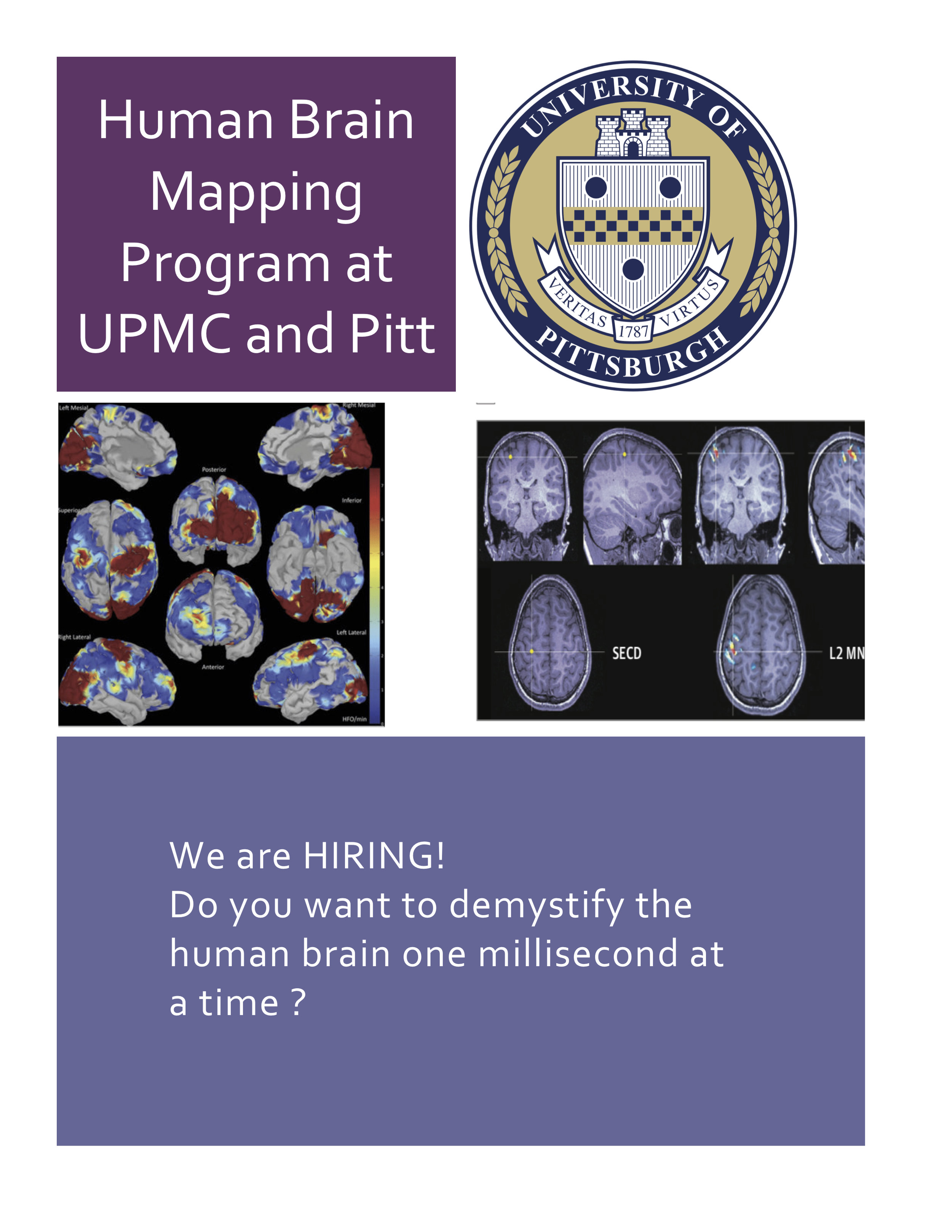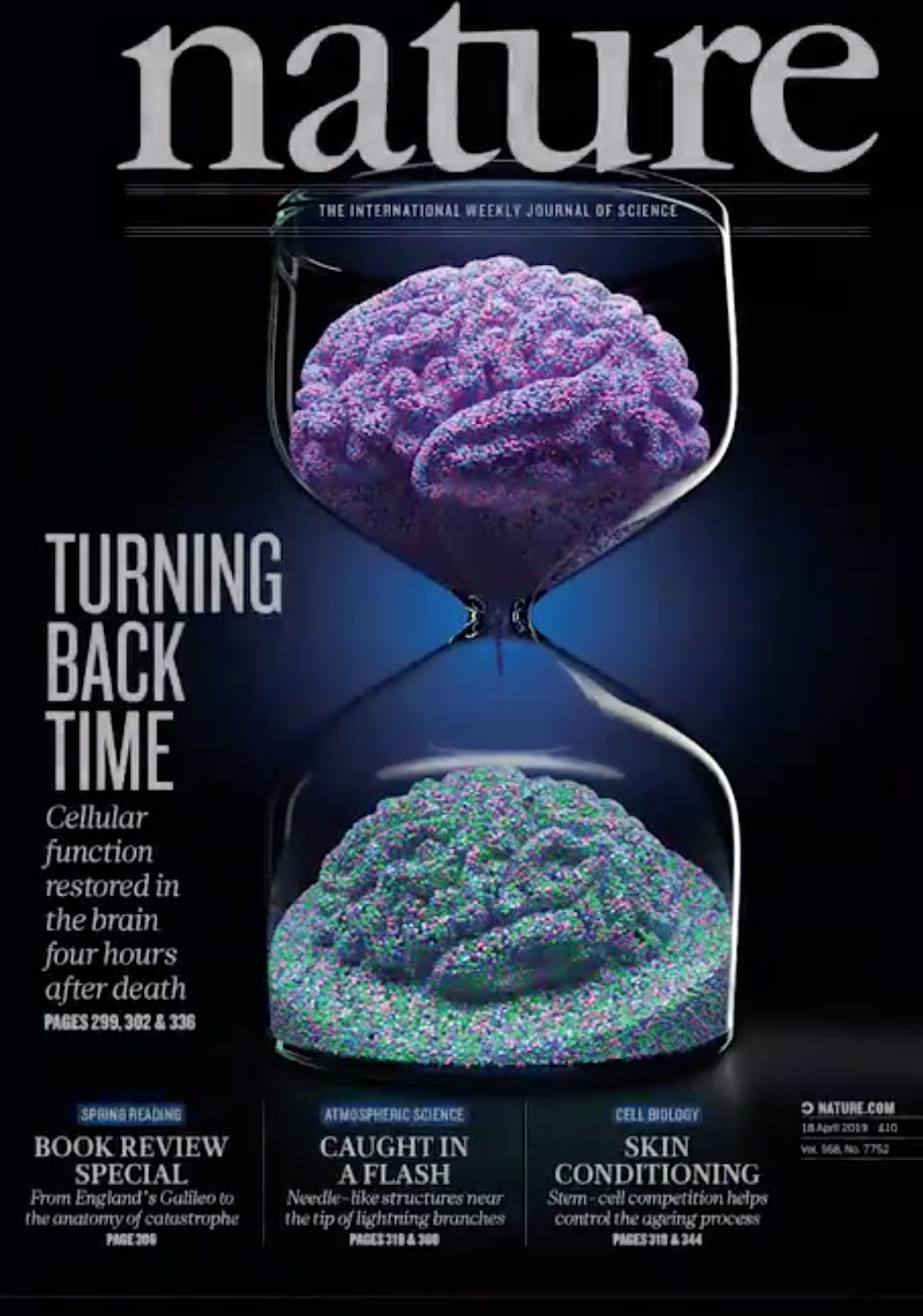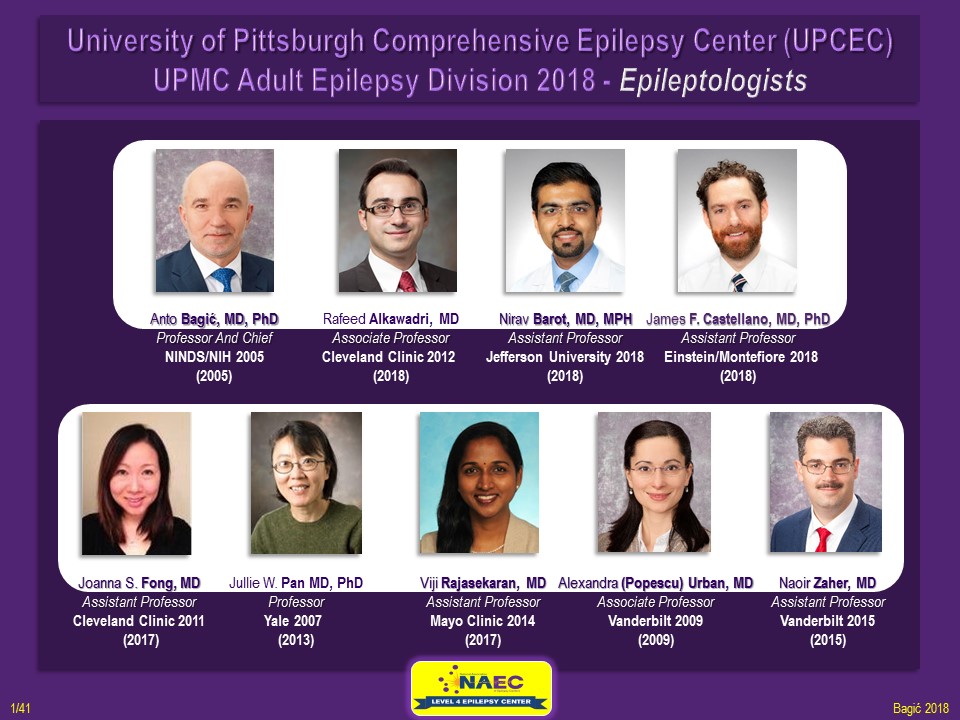Our artwork making it to front cover ... again!
It follows a tradition of similar articles that made it to the cover.
Read MoreIt follows a tradition of similar articles that made it to the cover.
Read MoreOur Tritan Joseph Plute’s Platform presentation “Real-Time & Passive Localization of the Epileptic Network based on Single-Pulse Electrical Stimulation: Correlation with the standard of care and surgical outcomes” was featured in the UPMC Department of Neurology newsletter. We are very proud of Tritan's success and congratulate him on this achievement.
Read MoreCongratulations to the HBM laboratory members on such a significant presence at the American Academy of Neurology Meeting this year in Seattle, Washington
Read MoreTo that end, we report on a profound illusionary alteration of time and duration perceptions. We analyze the cortical and subcortical networks relating to that experience.
To our knowledge, this account is the first original of a human’s experience of time dilation during direct cortical stimulation.
Read MoreWe are delighted to announce that our course series entitled “Human Brain Mapping” organized through the Human Brain Mapping Laboratory at the University of Pittsburgh Medical Center will take place as planned this academic year Jul 21 - Jun 22. The course has been held at UPMC since 2019, and at Yale 2013-2018 and had attracted local students, international scholars, neurology/neurosurgery faculty and post-doc in multiple subdomains. This course is open to everyone, is not credited, and does not require registration.
Read MorePlease join me in welcoming the newest addition to our the HBM lab, Dear Leith Alkawadri 3 weeks old, with best wishes for a smooth ride til the completion of your first EEG project.

email CV and 3 letters of reference.


Exceptionally excited that Dr. Patrick Chauvel is officially part of our epilepsy team. Welcome Dr. Chauvel and look forward to productive months ahead.

Consider this EEG course at UPMC (limited spots available)
Register here

Course timetable
To my friends in Connecticut: Tune in tomorrow 11/24 to listen to our radio segment for epilepsy awareness month For the People broadcasts live on CT's Connoisseur Media stations Star 99.9 / 99.1PLR / & 95.9-The FOX / WEBE 108 (FM) / and WICC-AM on the air or on-line: http://connoisseurmedia.com/portfolio/#category_id_20
In the episode, Dr. Alkawadri will discuss the important multisite study/work on the utility of ictal MEG in localization of the epileptic focus. Stay tuned. The best is only ahead.
we are thrilled that Dr. Jorge Gonzalez Martinez joined our epilepsy group at the University of Pittsburgh medical Center. Dr. Jorge Gonzalez Martinez is a pioneer of stereo EEG in the United States and a long term associate of mine. We look forward to high quality work ahead. His profile

Applications of BCI in mapping brain networks based on intracranial EEG RAFEED ALKAWADRI

Congratulations to all recipients. It was an honor and privilege to serve on this committee.
https://www.aesnet.org/research/early_career_funding/early_career_awards
Organization: The University of Pittsburgh, Department of Neurology
Organization Contact: PI Rafeed Alkawadri rafeed.alkawadri@pitt.edu
Position Title: Post-graduate research associate.
Position Type: Full-time for 1-year renewable based on performance and satisfactory academic performance as defined by the principle investigator Location: Pittsburgh, Pennsylvania
Job Description: This is a great opportunity in one of the largest schools in the United States, reputable for an amazing research environment. Pitt comprehensive Epilepsy Center is one of the leading and most modern in the world. The Comprehensive Epilepsy Center is internationally recognized as a leader in treatment of medically intractable epilepsy. The center has been on the cutting edge in pioneering many advanced functional imaging and surgical techniques. The research involved combine multi-modalities to advance our understanding of epileptic and functional networks with primary focus on intracranial EEG. This is a great opportunity to work by the side of the PI and a renowned neuro-surgeon (TBA) with expertise in functional neurosurgery and epilepsy in particular. The center has pioneered modernization and the re-introduction of stereo-EEG in the United States. Besides routine job duties, candidates will have the opportunity to attend graduate-level coursework in neuro-science, biomedical, and signal and image processing. Candidates may have the opportunity to apply for their own grants depending on level of training to support further funding. Candidates will contribute in many ways to the research project, typical responsibilities include but not limited to: Conduct literature reviews, collect and analyze data, consent the patients, run Matlab routines among others.
Requirements/Qualifications: Previous research experience is required. This position is ideal for students/post-graduates with interests in neuroscience, signal and image processing. Track record with several publications, and prior experience in Matlab and python are a requirement.
Application Instructions: Please email your CV and personal statement to the principle investigator. Rafeed.alkawadri@pitt.edu
Work Hours: Approximately 40 hours per week and flexible schedule.
Salary: based on experience
Deadline for application: 10/1/2019
Note for international applicants with visa requirements: The process may take up to 90 days.

Apply using contact us or email PI: Rafeed dot Alkawadri at Pitt dot edu
Follow the story at Nature Pig brains kept alive outside body for hours after death
NPR: Scientists Restore Some Function In The Brains Of Dead Pigs
New York Times: ‘Partly Alive’: Scientists ReviveCells in Brains From Dead Pigs
CNN: Researchers restore some function to brains of dead pigs, raising potential for human applications
National Geographic Pig brains partially revived hours after death—what it means for people
Here is the link to the article:
Restoration of brain circulation and cellular functions hours post-mortem

Link to the full article click here
The brains of humans and other mammals are highly vulnerable to interruptions in blood flow and decreases in oxygen levels. Here we describe the restoration and maintenance of microcirculation and molecular and cellular functions of the intact pig brain under ex vivo normothermic conditions up to four hours post-mortem. We have developed an extracorporeal pulsatile-perfusion system and a haemoglobin-based, acellular, non-coagulative, echogenic, and cytoprotective perfusate that promotes recovery from anoxia, reduces reperfusion injury, prevents oedema, and metabolically supports the energy requirements of the brain. With this system, we observed preservation of cytoarchitecture; attenuation of cell death; and restoration of vascular dilatory and glial inflammatory responses, spontaneous synaptic activity, and active cerebral metabolism in the absence of global electrocorticographic activity. These findings demonstrate that under appropriate conditions the isolated, intact large mammalian brain possesses an underappreciated capacity for restoration of microcirculation and molecular and cellular activity after a prolonged post-mortem interval.
This is exciting indeed and though the brain continuously demonstrated isoelectric rhythms the viability as demonstrated otherwise by metabolic measures, histopathological slices and slice electrophysiology is fascinating, to say the least.
The Electrophysiology Experiment employing standard ECOG recording
Just in case you missed breaking news this week. I am excited to share with you our article in Nature:
Restoration of brain circulation and cellular functions hours post-mortem
a.k.a op. The curious case of a dead brain.
Aside from media buzz and just to be clear this is no where close to be applied in human.
A real a tour de force and fun because
1. It has not been done before and provides a reliable platform for further investigation
2. It demonstrates viability is not binary rather gradable even in the sub-conscious state post-mortem.
3. It reminds of the importance of clinical knowledge/experience even in the most basic lab settings as some of the movements observed were spino-cephalic, medula-cephaic or simply neuromuscular excitability from the severed nerves.
4. I expect that the ethical aspects related to such experiment would motivate work to quantify/grade pain and discomfort based on electrophysiology.
5. It validates previous observations of drug induced isoelectric EEG not incompatible with recovery. It is another reminder why EEG is not a major criterion in evaluation of brain death.
6. Lastly, if familiar with the work of Giovani Aldini and the big Volta/Galvani’s debate - this work is a reminder of the what the humankind is capable of within a short time frame in history.
Hope you enjoy!

Please allow me to introduce the epilepsy team at the University of Pittsburgh Comprehensive Epilepsy Center:

New Haven, Conn
For immediate release
July 5, 2018
To my Patients:
I am writing to inform you that I will be leaving the practice at Yale to assume advanced faculty position at the University of Pittsburgh where I will continue to provide clinical care with emphasis on drug-resistant epilepsy and conduct high quality translational research.
Read MoreHere we come to the end of another course. Please join us for the end-of-year celebration this Friday 6/22/18 at 900 am in LCI-7 to discuss future plans.
Read MoreCONTACT: Www.humanbrainmapping.net/contactus
Story update June 19, 2018: Follow the story at Yale News :
https://news.yale.edu/2018/06/19/new-technique-fine-tunes-treatment-severe-epilepsy-cases
For Immediate Release: June, 14, 2018
A new hope for surgical epilepsy patients: a new technique increases the chance of complete seizure freedom and may spare the patients, risks and invasive procedures
New Haven, Connecticut. A recent study published in JAMA Neurologyon June 11, 2018 showed that
Read More